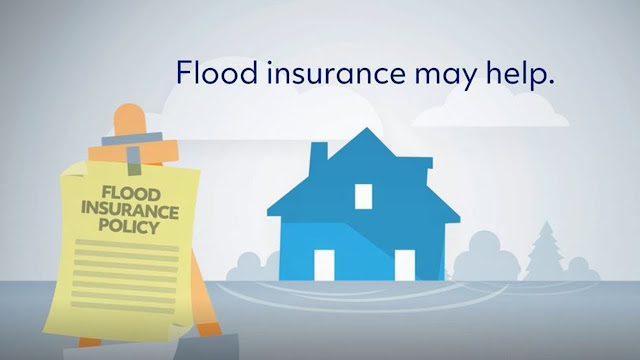Finance
How Central Bank Digital Currencies Will Revolutionize Payments

How Central Bank Digital Currencies Will Revolutionize Payments
For centuries, traditional paper money has been the standard for financial transactions around the world. But with the rise of digital payments and new technological innovations, is it possible that we may soon see a shift to digital currencies? Central Bank Digital Currencies (CBDCs) are being proposed by central banks as a form of digital currency that could potentially revolutionize payments and allow them to be more efficient and reliable. In this article, we’ll explore how CBDCs work, their potential benefits, and what implications they could have on the global economy.
What are Central Bank Digital Currencies?
Central bank digital currencies (CBDCs) are digital fiat currencies issued by central banks. They are legal tender and can be used to make payments and settle debts just like regular fiat currencies. CBDCs are backed by the full faith and credit of the issuing central bank.
CBDCs have many advantages over regular fiat currencies. They are more efficient to use and settle, and they can be used to make instant payments 24/7. CBDCs also have enhanced security features that make them more resistant to fraud and hacking.
With the advent of CBDCs, central banks will have greater control over the money supply and monetary policy. This will allow them to better manage inflation and stabilize prices. CBDCs will also allow central banks to directly lend money to businesses and households, which will stimulate economic activity.
The introduction of CBDCs will revolutionize payments and settlement systems around the world. They have the potential to make global payment systems faster, cheaper, and more secure.
How Will They Revolutionize Payments?
The Bank of England has recently released a report on the potential of central bank digital currencies (CBDCs) and how they could revolutionize payments. The report outlines the benefits of CBDCs, including improved efficiency and security of payments, as well as increased access to financial services for all.
CBDCs would also allow for the deployment of new technologies, such as blockchain and smart contracts. This would enable innovative new applications and business models to emerge in the payments space. Such innovation is badly needed in an industry that has been slow to adopt new technologies.
The report makes a strong case for the benefits of CBDCs and their potential to revolutionize payments. It is now up to central banks to decide if and when to issue their own digital currencies.
What Are the Pros and Cons of Central Bank Digital Currencies?
Central bank digital currencies (CBDCs) have the potential to revolutionize payments by providing a more efficient and cost-effective way to make and receive payments. However, there are also some potential drawbacks to using CBDCs.
One of the biggest advantages of CBDCs is that they could help to reduce the costs of making and receiving payments. Currently, banks and other financial institutions charge fees for processing payments. With CBDCs, these fees could be greatly reduced or even eliminated altogether. This would make it cheaper and easier for people to send and receive money, which could boost economic activity.
Another benefit of CBDCs is that they could help to speed up the process of making and receiving payments. Currently, it can take several days for a payment to be processed by a bank or other financial institution. With CBDCs, payments could be processed much faster, which would save time and reduce frustration for everyone involved.
However, there are also some potential drawbacks to using CBDCs. One concern is that CBDCs could give central banks too much control over the economy. If central banks were able to issue their own digital currencies, they would be able to determine how much money is in circulation and potentially manipulate interest rates. This could lead to inflation or other economic problems.
Another concern is that CBDCs could be used for illegal activities such as money laundering or terrorist financing. Since CBDCs would exist purely in digital form, they
What Countries Are Adopting Central Bank Digital Currencies?
Digital currencies issued by central banks, often referred to as central bank digital currencies (CBDCs), are becoming increasingly popular as countries around the world explore ways to modernize their payment systems. While there is no one-size-fits-all solution for implementing a CBDC, many countries are drawn to the potential benefits of having a digital currency that is backed by a central bank.
Some of the benefits of CBDCs include increased efficiency and transparency in payments, reduced costs associated with traditional payment methods, and improved access to financial services for underserved populations. In addition, CBDCs have the potential to reduce money laundering and other illicit activities, as well as help stabilize local economies during times of crisis.
While the list of benefits is significant, there are also some challenges associated with launching a CBDC. For example, it is important to ensure that CBDCs are compatible with existing infrastructure and do not create undue risks for financial stability. In addition, central banks must carefully consider how to protect consumers and prevent fraud.
Despite the challenges, a number of countries are moving forward with plans to launch CBDCs in the coming years. The Bahamas was the first country to launch a CBDC, dubbed the Sand Dollar, in October 2020. China is also working on a digital version of its yuan currency, which is expected to be launched in pilot programs later this year. Other countries that are exploring or planning to launch CBDCs include Sweden, Canada, Japan
Conclusion
The potential for digital currencies to revolutionize payments is clear. By allowing citizens to quickly and securely send money anywhere in the world, central bank digital currencies would reduce costs and increase speed of transactions, making it easier for people to transact across borders. Moreover, these new digital currencies will give governments control over how their currency moves around the world and ultimately provide better monetary policy tools as well. The future of payments is here – central bank digital currencies are set to revolutionize global payments as we know them today!
Finance
How to Make Passive Income in Dollars: 10 Proven Methods

Introduction
Imagine waking up each morning to find extra dollars flowing into your account—without trading more hours. That’s the power of passive income in dollars. Unlike active income, which requires ongoing work, passive income continues to pay you after the initial effort. Whether you want to top up your salary, save for retirement, or achieve financial freedom, building passive income streams in U.S. dollars offers stability and growth. In this guide, we’ll explore 10 proven methods to generate dollar-based passive income, with simple steps to help you get started right away.
How to Make Passive Income in Dollars: 10 Proven Methods
1. Dividend-Paying Stocks
Dividend stocks are shares in companies that distribute part of their profits to shareholders, typically quarterly.
- Why it works: Reliable firms often raise dividends over time, beating inflation.
- How to start: Open a brokerage account, research blue-chip stocks with strong payout histories (e.g., Coca-Cola, Johnson & Johnson), and buy shares.
- Expected returns: 2–5% annual yield, plus potential stock price growth.
- Tip: Reinvest dividends via a DRIP (Dividend Reinvestment Plan) to accelerate compounding.
2. Real Estate Investment Trusts (REITs)
REITs own income-producing properties like apartments or offices and pay out most rental income as dividends.
- Why it works: Provides real estate exposure without managing property.
- How to start: Buy REIT ETFs (e.g., VNQ) or individual REIT stocks through your brokerage.
- Expected returns: 4–8% dividends annually.
- Tip: Choose diversified REITs with a mix of residential, commercial, and industrial assets.
3. Peer-to-Peer Lending
Platforms like LendingClub let you lend dollars to individuals or small businesses for interest payments.
- Why it works: Higher interest rates than savings accounts.
- How to start: Create an account, fund it, and choose loans by risk grade.
- Expected returns: 5–10% annual interest, depending on loan grades.
- Tip: Diversify across many small loans to lower default risk.
4. High-Yield Savings and CDs
For a low-risk option, high-yield savings accounts and Certificates of Deposit (CDs) pay steady interest.
- Why it works: Principal is safe and FDIC-insured up to $250,000.
- How to start: Compare rates at online banks; open an account or buy a 6–12 month CD.
- Expected returns: 2–4% APY currently.
- Tip: Shop for promotional rates and ladder CDs (buy multiple CDs with staggered maturities).
5. Digital Products
Create once, sell forever—e-books, printable planners, or music can generate ongoing sales in dollars.
- Why it works: No inventory, high profit margins.
- How to start: Identify a niche (e.g., healthy recipes), create the product, and sell via Amazon, Etsy, or your website.
- Expected returns: Varies widely; top sellers earn thousands monthly, but many earn $100–$500.
- Tip: Promote through social media and email to boost visibility.
6. Online Courses and Membership Sites
Teach your expertise—from coding to cooking—through paid courses or subscription sites.
- Why it works: Learners pay once or monthly for access to your knowledge.
- How to start: Outline a course, record video lessons, and host on platforms like Teachable or Kajabi.
- Expected returns: $200–$2,000 per course sale or $20–$50/month per subscriber.
- Tip: Offer free mini-courses or webinars to attract students.
7. Affiliate Marketing
Earn commissions by recommending products or services in dollars.
- Why it works: No product creation needed; you earn a percentage per sale.
- How to start: Choose a niche blog or YouTube channel, sign up for Amazon Associates or niche affiliate programs, and embed links in content.
- Expected returns: 5–10% commission on each sale; active sites can earn $500–$5,000/month.
- Tip: Focus on high-ticket items (e.g., electronics) for larger commissions.
8. Rental Income
Rent out a spare room, parking space, or vacation home for steady dollar income.
- Why it works: Real assets produce regular cash flow.
- How to start: List on Airbnb for short-term stays or VRBO; or use traditional long-term rentals via Zillow or Craigslist.
- Expected returns: Varies by location; 6–10% annual return after expenses.
- Tip: Automate management with keyless entry and co-host services.
9. Royalties from Creative Work
Musicians, authors, and photographers earn royalties when their work is used or sold.
- Why it works: Your creation continues to generate dollars long after release.
- How to start: Publish your book with Amazon KDP, license photos on Shutterstock, or upload music to streaming services.
- Expected returns: Small upfront, growing with catalog size—$100–$1,000+ monthly for popular creators.
- Tip: Promote across platforms and keep adding new works to diversify revenue.
10. Automated Investing with Robo-Advisors
Robo-advisors (Betterment, Wealthfront) invest your dollars in diversified portfolios and reinvest dividends automatically.
- Why it works: Hands-off investing with low fees.
- How to start: Open an account, set your risk level, deposit funds, and let the algorithm manage your money.
- Expected returns: Historically 5–7% annualized, depending on market conditions.
- Tip: Use tax-loss harvesting features to boost after-tax returns.
Tips for Success in Building Passive Income
To maximize your dollar-generating streams:
- Diversify: Spread dollars across multiple methods—stocks, real estate, digital products—to reduce risk.
- Reinvest Earnings: Compound returns by reinvesting dividends, interest, and profits.
- Automate: Set up auto-deposits into savings, robo-advisors, or peer-to-peer accounts for consistency.
- Monitor Fees: Watch out for high management fees or platform commissions that eat into returns.
- Stay Patient: Passive income grows over time; expect steady progress rather than overnight riches.
By following these core principles, you ensure sustainable, dollar-based income growth.
Common Pitfalls and How to Avoid Them
Even passive income requires vigilance:
- Chasing High Yields: Beware promises of 20% returns—higher risk often means more chance of loss.
- Neglecting Research: Always vet platforms, read reviews, and understand terms before investing dollars.
- Overconcentration: Don’t put all your dollars into one stock, rental, or digital product.
- Ignoring Taxes: Report your passive earnings properly; consider setting aside 20–25% for taxes.
- Underestimating Maintenance: Rental properties and digital platforms need occasional updates and oversight.
Anticipating pitfalls keeps your passive income streams healthy and resilient.
Conclusion
Earning passive income in dollars empowers you to build wealth, increase financial security, and free time for what matters most. From dividend stocks and REITs to digital products, rentals, and robo-advisors, the ten methods outlined here offer diverse ways to put your dollars to work. Remember to diversify, reinvest earnings, and automate contributions for the best results. Stay patient, monitor fees and taxes, and adjust strategies as you learn. With consistent effort and smart choices, you can transform side hustles and investments into steady dollar streams—paving the way to genuine financial freedom.
Business
How Finance Plays a Crucial Role in Business Success

Introduction
Every thriving business relies on sound financial management. Finance plays a crucial role in business success by guiding decisions, securing funding, and ensuring operations run smoothly. From a small startup juggling its first invoices to a large corporation planning expansion, effective use of money—both incoming and outgoing—determines growth or failure. In this article, we’ll explore how budgeting, cash flow control, strategic investment, and risk management empower businesses to seize opportunities, navigate challenges, and build a stable foundation for long-term success.
Rise of Finance’s Importance in Business Success
Over time, businesses have learned that managing money well is just as vital as making great products or offering popular services. In the early days, many companies focused mainly on sales and production, treating finance as a back-office task. As markets grew more complex and competition increased, leaders saw that financial planning and control could make or break their growth. This shift pushed finance from a support role into a central driver of strategy, helping businesses plan for the future and adapt when markets change.
Benefits of Strong Financial Management
Good finance practices bring clarity and confidence to every part of a business. Clear budgets and forecasts help teams know how much they can invest in marketing, hiring, or new equipment. Tracking costs and revenues ensures that resources are used wisely, cutting waste and boosting profits. With reliable financial data, leaders can make faster decisions—like launching a new product or entering a new market—while keeping risks under control. In short, strong finance builds stability and paves the way for smart growth.
Role of Finance in Daily Operations
Every day, finance teams monitor cash flow to make sure bills get paid and salaries are on time. They set up financial controls to prevent errors or fraud, such as approving expenses and reconciling bank statements. Finance also supports other departments by providing cost reports, pricing analyses, and performance metrics. Whether a manager needs to know the profit margin on a project or the break-even point for a new investment, the finance team delivers the numbers and insights to guide decisions.
How Finance Plays a Crucial Role in Business Success
1. Budgeting: The Financial Roadmap
A detailed budget acts as a roadmap for business operations. It estimates revenue, plans expenses, and sets targets for profit and investment.
- Expense Planning: Allocates funds for rent, salaries, marketing, and utilities.
- Revenue Forecasting: Projects sales based on market research and past performance.
- Performance Tracking: Compares actual results to projections, highlighting areas to adjust.
By sticking to a budget, companies avoid overspending, allocate resources wisely, and measure progress against clear financial goals.
2. Cash Flow Management: Keeping the Lights On
Cash flow—the money coming in versus money going out—must stay positive for daily operations to continue.
- Accounts Receivable: Ensuring customers pay on time, using clear invoices and reminders.
- Accounts Payable: Negotiating payment terms with suppliers to retain cash longer.
- Cash Reserves: Maintaining emergency funds for unexpected expenses.
Healthy cash flow prevents disruptions like missed payroll or delayed shipments, giving businesses the stability to grow.
3. Funding: Fueling Growth and Innovation
Businesses often need external capital to expand. Finance teams explore options like:
- Loans: Bank or government-backed loans with set repayment schedules.
- Equity Financing: Selling shares to investors, trading partial ownership for funds.
- Grants and Subsidies: Applying for public or private grants targeting specific industries.
- Crowdfunding: Raising small amounts from many supporters online.
Choosing the right funding mix balances cost, control, and risk, enabling confident investment in new products or markets.
4. Strategic Investment: Where to Put Your Money
Allocating capital wisely drives competitive advantage. Key areas include:
- Technology: Upgrading software, automation, or data analytics tools to boost efficiency.
- Talent: Hiring skilled staff and investing in employee training and retention.
- Marketing: Targeted advertising and brand-building activities to attract and retain customers.
- Facilities: Expanding or improving production and office spaces.
Strategic investments create long-term value, helping businesses innovate and adapt in changing markets.
5. Financial Analysis: Insights for Better Decisions
Regular analysis of financial data—revenues, costs, margins—reveals trends and opportunities:
- Ratio Analysis: Metrics like profit margin, return on investment (ROI), and debt-to-equity ratio assess health.
- Break-Even Analysis: Determines sales needed to cover fixed and variable costs.
- Forecast Modeling: Projects future performance under different scenarios, guiding strategic choices.
Data-driven insights reduce guesswork, guiding businesses toward profitable activities and away from costly mistakes.
6. Risk Management: Protecting Your Assets
All businesses face risks—from market downturns to supply chain disruptions. Finance teams mitigate these through:
- Diversification: Spreading investments and revenue streams across products or regions.
- Insurance: Protecting against property damage, liability, or business interruption.
- Hedging: Using financial instruments to lock in prices or rates, reducing exposure to currency or commodity swings.
- Contingency Planning: Setting aside reserves and defining response plans for emergencies.
A proactive approach to risk ensures that setbacks don’t derail long-term goals.
7. Compliance and Governance: Staying on the Right Side of the Law
Financial success requires adherence to regulations and ethical standards:
- Tax Compliance: Accurate reporting and timely payments to avoid penalties.
- Financial Reporting: Following accounting standards for transparency and credibility.
- Internal Controls: Procedures to prevent fraud and errors, such as regular audits.
- Corporate Governance: Clear policies and oversight that align leadership decisions with shareholders’ interests.
Strong governance builds trust with investors, customers, and regulators, supporting sustainable growth.
8. Cost Control: Maximizing Efficiency
Keeping costs in check boosts profitability. Cost-control strategies include:
- Lean Operations: Eliminating waste through streamlined processes and just-in-time inventory.
- Supplier Negotiations: Securing better pricing or volume discounts.
- Outsourcing: Delegating non-core tasks—such as payroll or IT—to specialists to reduce overhead.
- Energy Efficiency: Cutting utility bills with efficient lighting, heating, and equipment.
Effective cost control widens profit margins, freeing up resources for investment and innovation.
9. Building Financial Resilience
Long-term success depends on resilience—the ability to weather economic ups and downs:
- Emergency Fund: Saving a percentage of profits each year for downturns.
- Debt Management: Keeping borrowing within manageable limits to avoid heavy interest burdens.
- Scenario Planning: Developing multiple “what-if” strategies to respond quickly to crisis or opportunity.
- Continuous Learning: Updating skills and financial strategies to adapt to evolving market conditions.
Resilient businesses recover faster from shocks and emerge stronger than competitors.
10. Cultivating a Financial Mindset Across the Team
Finally, finance should not be isolated. Engage all departments in financial awareness:
- Budget Ownership: Encouraging managers to set and monitor their own budgets.
- Financial Training: Teaching non-finance staff to read statements and understand cost implications.
- Performance Incentives: Rewarding employees for meeting financial targets, such as cost savings or revenue growth.
- Cross-Functional Collaboration: Involving finance teams early in product development and marketing planning.
A shared financial mindset aligns the entire organization behind profitability and sustainable success.
Challenges in Financial Management
Despite its benefits, finance faces real hurdles. Forecasting can be tricky when markets shift suddenly or unexpected costs arise. Small businesses may struggle to hire skilled financial staff or afford advanced accounting software. Rapid growth or complex transactions can overwhelm existing systems, leading to mistakes or cash shortages. Tightening regulations and reporting requirements add more work, making it harder to stay on top of compliance. These challenges demand both people and technology to keep finance accurate and agile.
Future of Finance in Business Success
Looking ahead, finance will become even more strategic and technology-driven. Automation and cloud-based tools will handle routine tasks—like invoice processing and data entry—freeing teams to focus on analysis and planning. Advanced analytics and AI could spot trends or risks early, offering real-time insights rather than waiting for monthly reports. As finance leaders partner more closely with CEOs and department heads, they will shape strategy, identify growth opportunities, and ensure businesses remain resilient in changing markets.
Conclusion
Effective financial management is the backbone of business success. From meticulous budgeting and cash flow control to strategic investments, risk mitigation, and strong governance, finance guides every major decision. By combining data-driven analysis with ethical compliance and cost control, companies can seize growth opportunities while safeguarding their future. Building resilience through reserves and scenario planning, and fostering a financial mindset across teams, ensures that businesses thrive in both calm and stormy markets. Embrace these financial principles to drive your organization forward—after all, sound finance is the key to unlocking lasting prosperity.
Finance
Missouri Flood Insurance Guide: Coverage, Mitigation, and Savings

Introduction
Living in Missouri means enjoying rivers, lakes, and green valleys. But it also means facing flood risk. From the Mississippi’s spring swells to sudden storms in the Ozarks, floods can strike with little warning. Missouri flood insurance protects homeowners and renters against costly water damage. This guide explains everything you need to know—coverage basics, mitigation tips, and ways to save on premiums. Whether you’re in St. Louis, Kansas City, or a rural county, these insights will help you build resilience and peace of mind.
1. Understanding Missouri’s Flood Risk
Missouri’s geography makes flooding common:
- Major Rivers: The Mississippi, Missouri, and Osage rivers can overflow during heavy rains.
- Flash Flood Zones: The Ozark Plateau’s hills can funnel sudden storms into narrow valleys.
- Urban Flooding: St. Louis and Kansas City face flash floods where concrete prevents water absorption.
- FEMA Flood Zones: Zone A and AE are high-risk; Zone X (shaded) is moderate risk; Zone X (unshaded) is minimal risk.
Homes in high-risk zones often require flood insurance by mortgage lenders. But properties outside these areas can still flood, making insurance a smart choice for all Missourians.
2. Flood Insurance Basics
Standard homeowners or renters policies do not cover flood damage. You need a separate flood policy. Two main options exist:
- National Flood Insurance Program (NFIP):
- Backed by FEMA, widely available.
- Up to $250,000 for building coverage and $100,000 for contents.
- 30-day waiting period before full coverage kicks in.
- Private Flood Insurance:
- Offered by specialty carriers.
- Can provide higher limits or additional coverages, like sewer backup.
- May fit homes with unique designs or older structures.
Both coverages protect against rising water, seepage, and overflow. Key coverages include:
- Building Coverage: Pays to repair or replace the structure.
- Contents Coverage: Covers furniture, electronics, and personal items.
- Additional Living Expenses (ALE): Pays hotel and meal costs if your home is uninhabitable.
Add-ons like basement contents or ordinance/law coverage help fill gaps, so review your policy details carefully.
3. Who Needs Flood Insurance?
Flood insurance is a lifeline if you live in:
- High-Risk Zones (A/AE): Lenders usually require it.
- Moderate-Risk Areas (X shaded): Floods still occur; insurance is wise.
- Rural Properties: Levee breaks or river floods can reach far from rivers.
- Renters: Contents coverage protects your belongings.
Even if your mortgage doesn’t require it, consider insurance if you’d struggle to rebuild after a flood. Flood damage averages $35,000 per event, far more than most families can cover out of pocket.
4. Flood Mitigation Strategies
Reduced risk usually means lower premiums. Key Missouri flood mitigation tips include:
- Elevation: Raise your home or critical utilities above the base flood elevation.
- Flood Vents: Install vents in crawl spaces to allow water flow and reduce pressure on walls.
- Sealing Walls: Use waterproof coatings on basement walls to limit seepage.
- Landscaping Adjustments: Build berms or swales to redirect water away from your foundation.
- Sump Pumps: Install a reliable pump with a battery backup to clear basement water fast.
Local grants and FEMA’s Hazard Mitigation Grant Program can help fund these measures.
5. Tailored Endorsements for Maximum Protection
Standard policies may not cover everything. Add endorsements for:
- Basement Contents: Furniture, washers, and freezers often sit in basements.
- Sewer/Drain Backup: Covers water damage from blocked or overloaded sewer lines.
- Increased Limits: Raise coverage for high-value items or building upgrades.
- Ordinance/Law Coverage: Pays to rebuild to new code standards after a loss.
Review your home’s unique risks and ask your agent about these custom options.
6. Premium Incentives and Savings
Missouri homeowners can save on flood insurance by:
- Joining CRS (Community Rating System): Communities that go beyond NFIP standards earn blanket discounts.
- Implementing Mitigation Measures: Elevation, vents, and pumps can lower your rate class.
- Bundling Policies: Some insurers offer package discounts for home and flood coverage together.
- Shopping Private Markets: Compare NFIP rates to private carriers for better deals or extra coverages.
- Building Before Flood Event: Rates rise after a flood claim; buy coverage early.
A small investment in flood resilience delivers both safety and steady savings over time.
7. Filing a Flood Claim
After flood damage, prompt action speeds recovery:
- Ensure Safety First: Turn off electricity and evacuate if needed.
- Document Damage: Photograph every room, item, and exterior damage.
- Contact Your Insurer: Report the loss within 30 days.
- Meet the Adjuster: Walk through the damage and provide photos and receipts.
- Review Your Settlement: Check that building and contents estimates match your losses.
- Make Repairs: Keep records of all repair bills and contractor notes.
FEMA’s Disaster Survivor Assistance teams can guide policyholders after major events.
8. Tips for Lowering Your Costs
Follow these simple steps to get the best rate:
- Get an Elevation Certificate: Shows your home sits above flood levels—often a big discount.
- Buy Early: Purchase at least 30 days before flood season starts in spring.
- Maintain Mitigation Systems: Keep pumps and vents in working order and replace old equipment.
- Bundle Coverages: Ask your agent about discounts for multiple policies.
- Compare Annually: Market options change; review NFIP versus private quotes each year.
Small changes—like sealing a basement or adding a battery backup—can reduce premiums significantly.
Conclusion
Missouri flood insurance is more than a policy—it’s your safeguard against nature’s power. By understanding your coverage options, adding tailored endorsements, and investing in flood mitigation measures, you can protect your home and wallet. Remember to buy early, document your property, and explore both NFIP and private markets for the best deal. With the right combination of insurance and resilience, Missouri homeowners can face flood season with confidence and keep peace of mind no matter what the weather brings.
-
Business2 years ago
Cybersecurity Consulting Company SequelNet Provides Critical IT Support Services to Medical Billing Firm, Medical Optimum
-
Business2 years ago
Team Communication Software Transforms Operations at Finance Innovate
-
Business2 years ago
Project Management Tool Transforms Long Island Business
-
Business2 years ago
How Alleviate Poverty Utilized IPPBX’s All-in-One Solution to Transform Lives in New York City
-
health2 years ago
Breast Cancer: The Imperative Role of Mammograms in Screening and Early Detection
-
Sports2 years ago
Unstoppable Collaboration: D.C.’s Citi Open and Silicon Valley Classic Unite to Propel Women’s Tennis to New Heights
-
Art /Entertainment2 years ago
Embracing Renewal: Sizdabedar Celebrations Unite Iranians in New York’s Eisenhower Park
-
Finance2 years ago
The Benefits of Starting a Side Hustle for Financial Freedom































